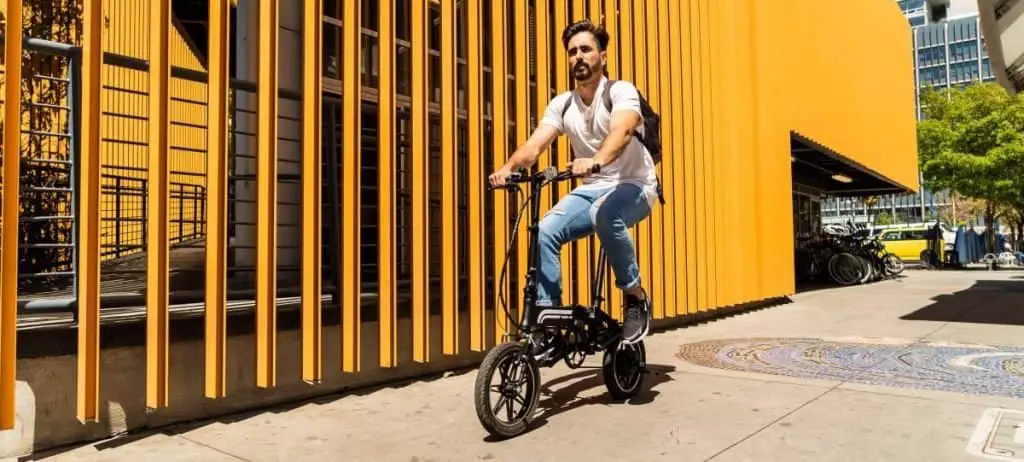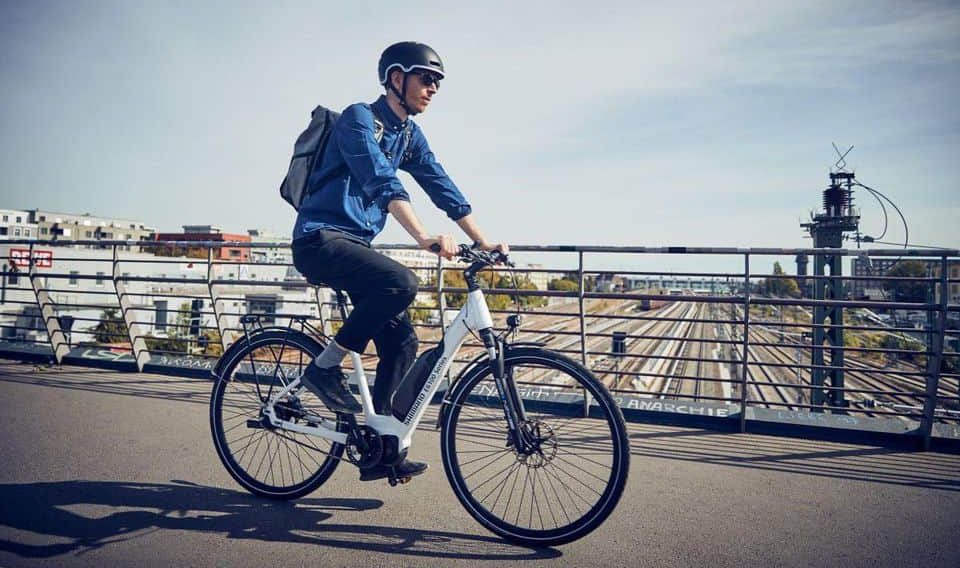Last Updated on July 19, 2023 by Igor Karni

For e-bike riders who live in Canada, it is extremely important to understand the rules and regulations surrounding e-Bikes, especially within each province (as the rules vary). With so many different classes of electric bicycles as well as factors like motor and speed limits, riders should understand what the federal and provincial laws are before riding.
This article will address all you need to know about the rules and regulations surrounding e-bikes in Canada.
Are electric bikes legal in Canada?
Yes, electric bikes are legal in Canada. However, there are specific rules, restrictions, and regulations in terms of what is classified as an e-bike (Wikipedia source). This includes speed limits, motor power, and more. Another factor to keep in mind is that certain rules and regulations vary between each province.
Here are the universal rules across the provinces in Canada regarding electric bikes (excluding Prince Edward Island, which has its own set of rules):
- E-Bikes are limited to 500 W motor output, and cannot travel faster than 32 kilometers per hour (20 miles per hour) on motor power alone on level ground
- E-Bikes must have steering handlebars as well as fully operable pedals, which means that they cannot be primarily battery controlled and that the engine must disengage when the rider stops pedalling
- It is prohibited to modify the vehicle’s motor to create speeds greater than 32 km/h (20 miles/h)
- The terms “assist bicycle” or “power assisted bicycle” (PABs) are the federal technical terms for an electric bicycle. This is defined to only apply to electric motor assist bicycles, and excludes vehicles with internal combustion engines
- All e-cyclists must wear a bicycle or motorcycle helmet at all times when riding
- Specific e-Bike labelling is required on all e-Bikes, stating that it meets all the necessary federal and provincial requirements
- A classified e-bicycle must have an attached motor that runs on electricity, not gas
Read also: What age to I need to be to ride an electric bike? And, Do I need a license to ride an electric bike?
Differences in rules/regulations between pedal assist and throttle e-bike in Canada
Canada does not use a class system when creating its rules surrounding e-Bikes the way that the U.S. does. However, riders should note that the main stipulation is that vehicles classified as e-Bikes cannot exceed a 500W motor wattage or motor speed of 32 km/h. Any vehicle that exceeds these measures may be classified as a motorcycle, moped, or other classification.
While this means that pedal-assist e-Bikes are safe to use so long as they meet the speed and motor output standards, throttle-on-demand (or, Class 2) e-Bikes is where it gets trickier.

For Class 2 e-Bikes, the electric drive system can be activated through a throttle element (like a grip-twist, button, or trigger). The motor system can also be activated through a pedaling action. Since some throttle e-Bikes allow riders to operate the vehicle without any human/pedaling power, however, this would fall outside of what the definition of an e-Bike is in Canada, and these types of e-bikes may be subject to requiring licenses.
In Canada, e-bikes are allowed to have a pedal assist and throttle function so long as the throttle function can be switched off.
Differences in rules/regulations between traditional e-Bike and speed e-bike in Canada
A “speed pedal-assisted electric bicycle”, also known as a speed e-Bike or Class 3 e-Bike, is different from a traditional e-Bike. The main difference is that the maximum speed that its motor provides is 28 miles per hour (45 km/h), whereas a traditional Class 1 e-Bike has a motor limit of 20 miles per hour (32 km/h).
Thus, according to the Canadian regulations – which note that legal e-Bikes cannot exceed the motor limit of 32 kilometers per hour – speed e-Bikes do not abide by the legal motor limit. Therefore, riders in Canada should stick to traditional e-Bikes over speed e-Bikes.
Read also: What is the difference between a regular e-bike and a speed e-bike? And, is it legal to derestrict electric bicycle speed?
Differences by Province
Though there are certain rules that apply across all provinces, here are some of the main differing features within each province in Canada.
Alberta – Alberta identifies e-bikes as “power bicycles”, which aligns with the federal definition of “power-assisted bicycle”. Passengers are allowed on the e-Bike only if it is equipped with a designated seat for the passenger. Riders must be 12 years of age or older, and there is no weight restriction.
British Columbia – Here, e-bikes are identified as a “motor-assisted cycle”, which means that the vehicle must be able to combine human pedal power with electric motor assistance. Class 1 e-Bikes are considered as such, whereas Class 2 and 3 e-bikes are considered motorized vehicles. Riders must be 16 years old or more.

Ontario – The maximum weight of an e-Bike must be 120 kg, and require a maximum braking distance of nine meters. A vehicle over this weight will no longer be classified as an e-Bike by law. Riders must be 16 years of age or older. Municipalities are also permitted to restrict where e-Bikes may be used on their streets, bike lanes, and trails, as well as restricting certain types of e-Bikes. More provincial information can be found here.
Manitoba – e-Bikes must not be designed to have more than three wheels touching the ground. Riders must also be at least 14 years of age or older. More provincial information can be found here.
New Brunswick – E-Bikes must have wheel rims that are larger than 9 inches and a seat at least 27 inches off the ground. Vehicles must also have a headlight for nighttime. If the vehicle was manufactured after 1988, it is required to have a compliance label stating that it meets provincial standards. There is currently no set minimum age for riding an e-Bike in New Brunswick.
Nova Scotia – In this province, power-assisted bicycles are classified similarly to standard pedal bicycles. Riders must wear their approved bicycle helmet with its chinstrap in place. More provincial information can be found here.
Prince Edward Island – This is the only province where e-Bikes are classified as limited-speed motorcycles and are treated similarly to mopeds. Due to this, e-Bikes are required to be registered and riders need a license. Operators must be 16 years or older.
Read also: Do you need a license to ride an e-bike? And, Do you need insurance to ride an e-bike?
Quebec – E-Bikes can have up to three wheels, and must include the original label imprinted by the manufacturer. Riders must be 14 and over to ride the electric bicycle and if they’re under the age of 18, must have a moped or scooter license. More provincial information can be found here.
Saskatchewan – Power-assisted bicycles are classified into two categories: an electric-assist bicycle, which is a bicycle that uses pedals and a motor at the same time. A power cycle uses either pedals and motor or motor only.
The power cycle must meet Canadian Motor Vehicle Safety Standards (CMVSS) for a power-assisted bicycle. The power cycle also requires at least a learner’s driving license. The electric-assist bicycle does not require a license or registration. Riders must be 14 years or older.
Newfoundland and Labrador – E-Bikes must be equipped with a red rear light, reflector, and white front light. Riders over the age of 18 do not need a license or registration, but riders between 14 – 17 need an authorized permit to operate a scooter, e-Bike, or moped.
Northwest Territories – The territories fall under federal jurisdiction, so riders must follow federal rules.
Differences in rules/regulations between traditional (human-powered) and electric bikes
While traditional bicycle rules vary per province, e-bike cyclists should keep in mind that for most provinces, e-Bikes are still considered vehicles that are subject to the same road rules as traditional bicycles or motorcycles.
For example, one universal rule across the country is that it is illegal to ride alongside other cyclists: riders must ride single file on roads and should leave a safe distance between other riders.

Overall, it is a good idea to consult your local and provincial road rules before riding. Here are some notable rules in certain provinces:
- In B.C., e-Bikes are subject to the same rights as the driver of a motor vehicle, such as obeying all traffic lights and control devices.
- In Ontario, e-Cyclists must follow the same traffic laws as traditional bicyclists. E-Bike riders are subject to the same penalties as other cyclists for traffic offenses
- In Manitoba, all laws regarding cycling apply to e-Bike riders. For example, hand signals for turning and stopping must be clearly visible. Riders should also stay as close to the curb as possible
- In New Brunswick, e-Bikers are considered similarly to bicycles and should follow all bicycle laws. For example, riders are allowed to use roads where a usable path for bicycles has been provided
- In Saskatchewan, both power cycle e-Bikes and electric-assist e-Bikes are treated as bicycles and must follow the rules as such
Need for an e-bike license, registration, insurance in Canada
In all the provinces and territories of Canada except for Prince Edward Island, e-Bikes that meet the standards of what is classified as an “assist bicycle”/ “power-assisted bicycle” (or any akin identifying term) do not require a license, registration, or liability insurance.
Read also: Check out Canada’s best travel destinations by electric bike.
However, riders who have occurred DUIs or have a suspended driver’s license may be ineligible to operate an e-Bike. Be sure to check with your provincial laws before riding your e-Bike if this has happened to you.
What types of roads/paths can you ride on an e-bike in Canada?
For the most part, e-Bikes are allowed to ride on and share most roads and paths that other bicycles and vehicles are allowed on. However, restrictions vary per province. Ensure that you check your most up-to-date local and provincial laws surrounding e-Bikes before riding.
Some notable rules within certain provinces include:
- In Ontario, riders can operate their e-Bikes on most roads and highways where traditional bicycles are allowed. However, exceptions include 400-series highways, expressways, and other areas where bicycles are not allowed.
Cyclists are also not allowed to ride on municipal roads, including sidewalks, where bicycles are banned under by-laws. E-Bike riders are also not allowed to ride on trails, paths, and lanes where it is stated that e-Bikes are expressly prohibited - In Nova Scotia, e-Bikes are legally allowed on highways
- In Quebec, electric bikes can be used on all roads except highways (which includes their exit and access ramps)
- In British Columbia, Class 1 e-Bikes can ride on any park trails where mountain bikes/other cycling is already allowed. Those with Class 2 and 3 e-Bikes, however, can only ride on trails and roads designated for motorized vehicles. All e-Bikes are allowed on highways
A few words in conclusion
Though there are some varying rules between the provinces within Canada, overall there are not too many hard restrictions on e-Bikes aside from motor output, speed, helmet usage, and age limit. Before buying or riding your e-Bike, it is ideal to read up about the e-bike rules in your province to ensure you and your vehicle are abiding by all the necessary legal standards!
Read also: Best e-bike financing in Canada. And, Top trusted electric bike brands in Canada. And, What to do with e-bike insurance in Canada?
Igor is a sustainable mobility and green energy advocate. His mission for Easy E-biking is to help make electric cycling simple, practical, and fun. Follow him on Facebook and LinkedIn.




